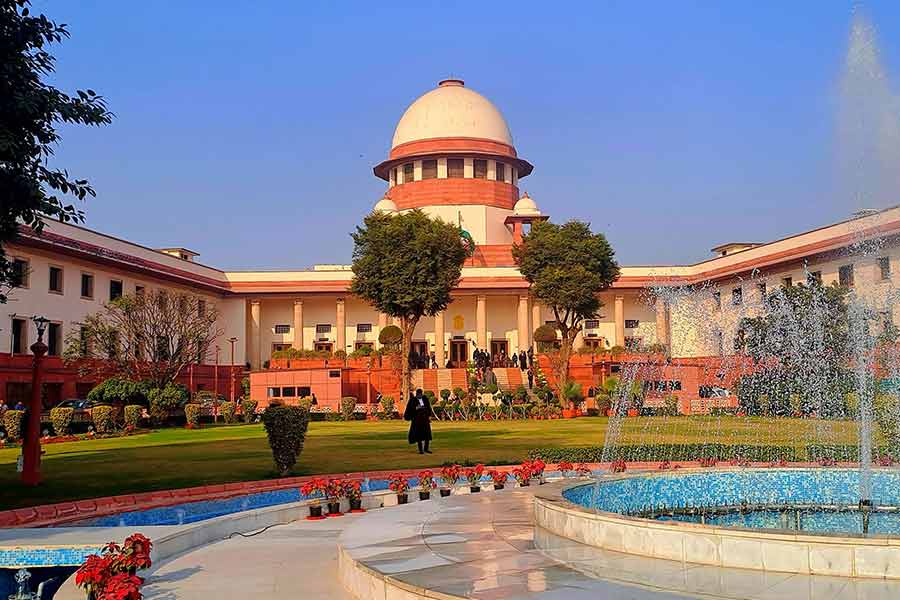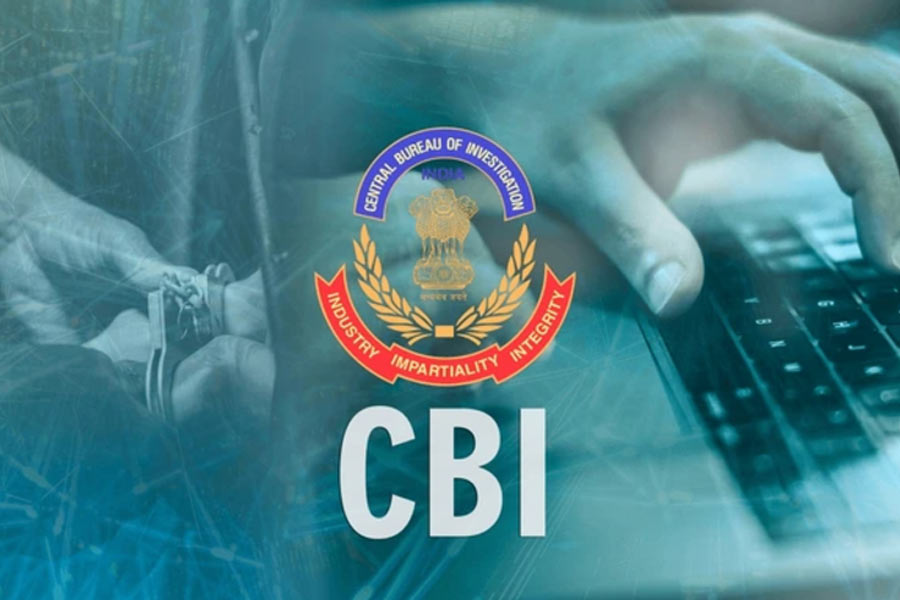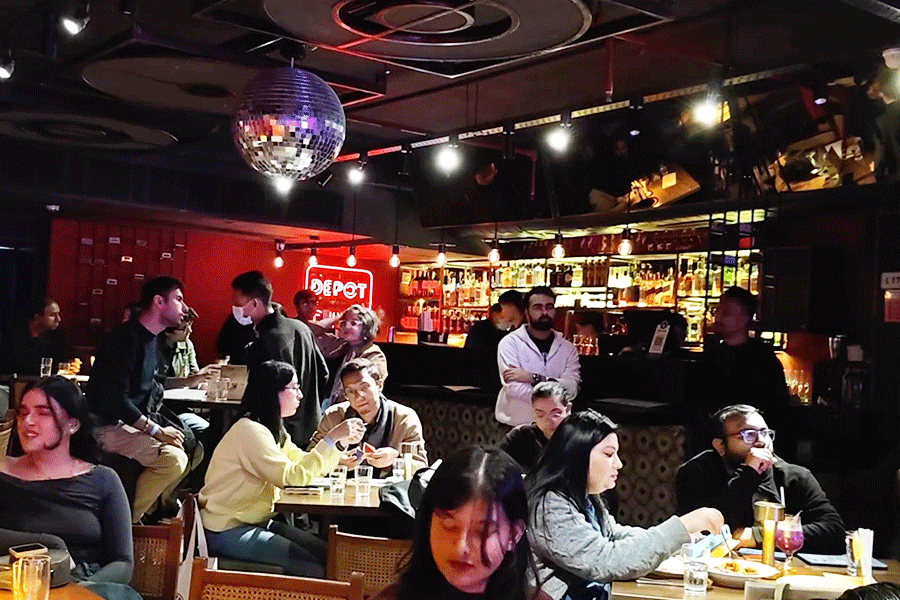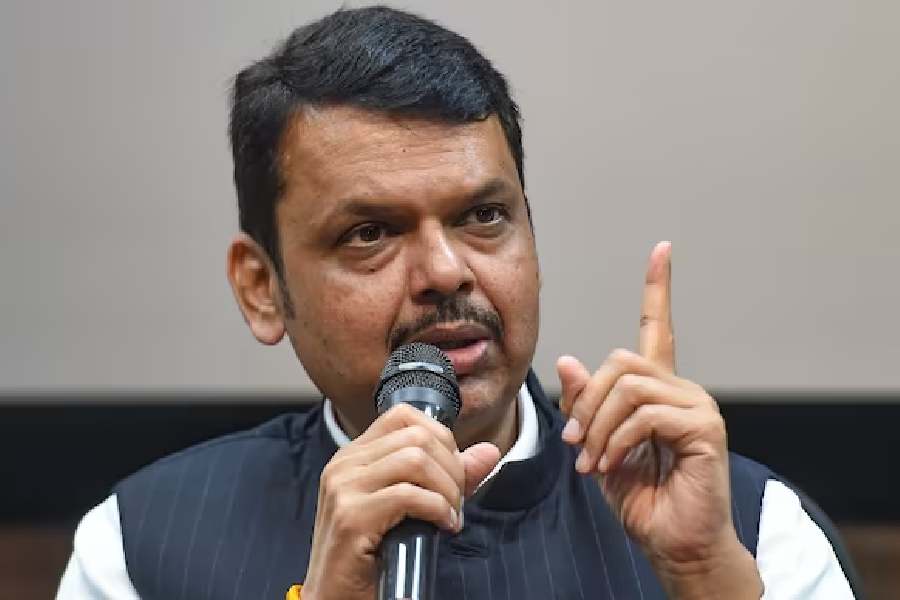 |
Nagda is situated on the Malwa plateau in Madhya Pradesh, halfway between Mumbai and Delhi. It is like many other towns and small cities of India, not known for anything very much, except in this case, it houses a large Birla viscose rayon plant. Again, as with other similar urban spaces, it is integrally linked to the rural hinterland. Several institutions are ubiquitous — schools, both government as well as ‘English’ ones, to which an aspiring population sends its children, a post office, health centre, shops that service nearby villages selling large aluminium silos, single gas burners, an odd miscellany of plastic buckets, ropes, mugs, and an STD booth with perhaps an internet connection —and a photo studio.
Social anthropologist Christopher Pinney, whose years of work and perceptive analyses have memorialized photographic practices in India, came to Nagda in 1982. He found his way to Suresh Punjabi’s Suhag Studio, founded by two brothers in the 1970s. It was not difficult to find the tiny studio, located as it was on Jawahar Marg. Pinney comments,“like many Jawahar Margs in other Indian towns, it is bisected by Mahatma Gandhi Marg and Rani Jhansi Marg.” This triad marks the “basic patriotic grid of urban life in numerous small towns in which similar photographic studios are also to be found.” Several visits later, Pinney’s interest in Suhag Studio grew after he salvaged many negatives, the detritus of a fierce monsoon storm that pierced the small studio. Looking through them, he found that a narrative of the town and its abutting areas in the 1970s and 1980s could be reconstructed by organizing a number of photographs which could reasonably be printed.
There was, of course, the perennial question of copyright and ownership. How would the subjects of these images react to being part of a process where they would be viewed by a much wider community? While Suresh Punjabi was enthusiastic about having his photographs circulated, Pinney needed to be sure of the customers of Suhag Studio. Most images dated back to the 1980s, and it would have been well nigh impossible to locate many persons. Pinney skilfully negotiated his way out of what could have been a tricky situation in say, any metropolis or even a reasonable-size western town, by preparing an experimental large-format photo book with many of the images. He showed this around in Nagda and a nearby village, and the “enthusiastic response” of viewers encouraged him to go ahead; he also had the earlier experience of his path-breaking Camera Indica — where the only complaints he received were from those left out. Pinney concludes that “[T]his points to a more general iconophilia and demand to be seen in central India which contrasts strongly with the anxieties around vision that characterize many other parts of the world”.
The production of the Nagda narrative so to speak involved many evenings of patient waiting; Suhag Studio is as busy today as it was in its early days. Pinney’s sessions with Suresh would usually start after four in the evening, often interrupted by clients collecting photographs, setting dates for sessions or booking him to cover weddings. Through lengthy discussions,Pinney was able to construct some understanding of the images and come up with a scheme of classification. What was particularly interesting was the distinction between photographs of young men and women that were in the ‘bhejna’ category and those meant only for ‘ishtyle’. Fantasy dominated the ‘ishtyle’ category while ‘bhejna’ necessitated decorum and modesty. ‘Bhejna’ is to send in Hindi, and in this context, it was photographs taken specially for the purpose of circulating among the families of prospective brides and grooms. While both had “different aesthetics and different audiences”, both were “future-oriented”. As in the 19th-century photographic studio in Calcutta or Bombay, a young woman would come accompanied by her ‘gharvale’— family members. It was an event of some magnitude, and there would be full-length images as well as portraits. Girls were not to appear too glamorous or they would be struck off the list of potentials as being ‘zyadaadvans’— too advanced. While no such protocol influenced the images of young men, they too could not appear in outrageous clothes or strike poses that might scare off likely in-laws. Such make-believe before the camera was reserved for the ‘ishtyle’ category of photographs and meant for a very different audience. Or perhaps only for the sitter himself, for his moments of silent reverie!
The images belong to another age in photography, a time of “buckets, chemicals, cramped spaces and staying up all night developing and printing”— and perhaps that’s why they were able to tell the story of Nagda life. They were taken at a time when backdrops were unfurled with gusto —local painters were enlisted to produce a stock of these — and customers’ fantasies could be played out at ease. The backbone of the practice, both then as now, was the limitless number of mug shots required for ration cards, school identities, insurance claims and so on. Then there were the other ‘musts’ —the conjugal portrait; after all, it was the Suhag Studio. Suhag bespeaks a state of blessed matrimony. Of these there were many, and a cursory reading of the body language of couples —whether it was the man who stood or the wife, if a hand hovered near the other partner’s shoulder, who was smiling and so on — would provide an interesting exegesis of middle-class matrimonial life in middle India a couple of decades ago. Photographs with siblings and friends were important as was the occasional non-regimented portrait: a woman with her favourite goat, a young Muslim girl standing proudly in her NCC uniform. And then there are the men —mustachioed, turbaned, smiling, dour-faced. Finally, the quest for other identities. There was no rapid fire of the digital camera but instead a leisurely jaunt into imaginary lives with the patient Suresh.
In Artisan Camera, Pinney invites us to an understanding of Nagda society through the photographs. He reminds us of Roland Barthes’ comment on looking at 19th-century society photographer Nadar’s portrait of Victor Hugo. Hugo apparently had extremely long finger nails and Barthes asked the ‘ethnographic question’: “how long were finger nails worn in the 19th century?” Similarly, in the Suhag repertoire of ‘ishtyle’ images, there is a young man sporting a white suit, his left leg poised on a chair to show off the trousers with enormous flares. This was the age of the bell-bottom trouser — and Nagda residents were not far behind when it came to making a fashion statement. Telephones were not common, and these were useful props, much in demand. A young man appears to be dialling a number and in another one, the customer, also a young man, has a half smile on his lips. It is of the kind that we have when are listening to someone at the other end of the line. At the left of him is a backdrop of improbable-looking snow peaks and spindly deodars. He is clearly on vacation, calling home, or maybe a loved one. The phone is of course a dummy. Fantasy has no limits — puny young men appear as body builders, another strikes a pose with a trumpet while a drunk lurches towards a three-quarter full bottle — of coloured water. A young woman with languid eyes and half-open lips looks sensuously at a bunch of plump green and black grapes. Like the telephone, the transistor radio too was a prized commodity and here two brothers proudly hold it up between them while they stare woodenly at the camera (picture). This was not a prop but had belonged to the men and they had come specifically to be photographed with what was perhaps a new acquisition.
In presenting a selection from Suhag Studio’s repertoire, Artisan Camera also gives the viewer an insight into what to expect in the many hole-in-the corner establishments that dot the Indian landscape. With the unerring instinct of an archivist, Pinney spent hours delving among soggy negatives; Suresh Punjabi and he recovered and worked on enough to bring together a slice of history of small town India. It might have been serendipity that guided Pinney to Suhag Studio — but in the end, it has become a significant input into an understanding of the camera in contemporary ‘rur-urban’ India.











